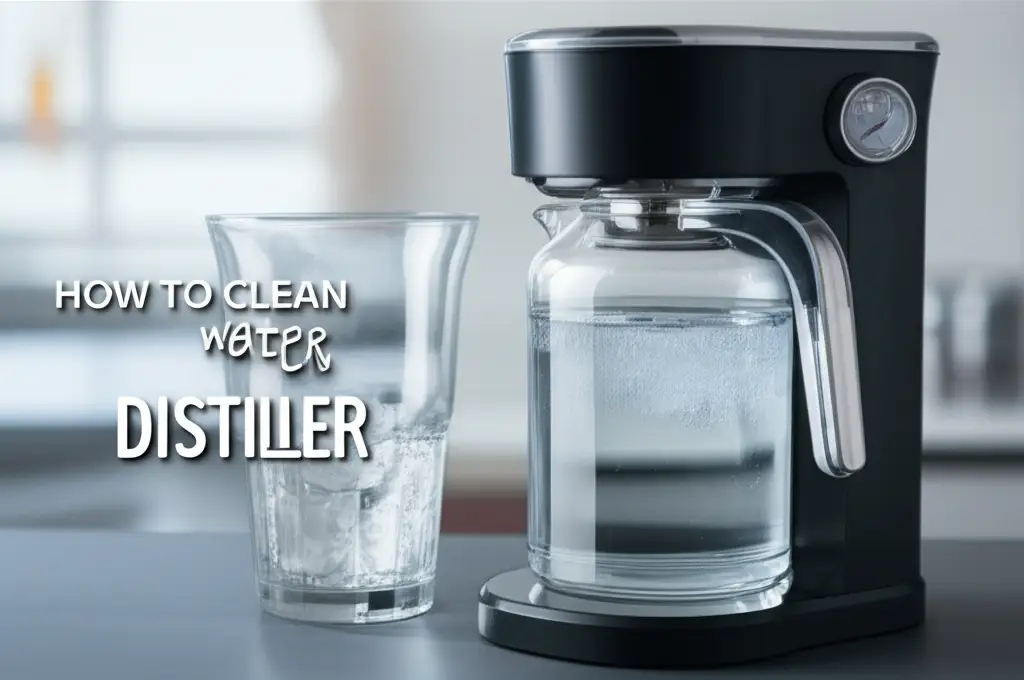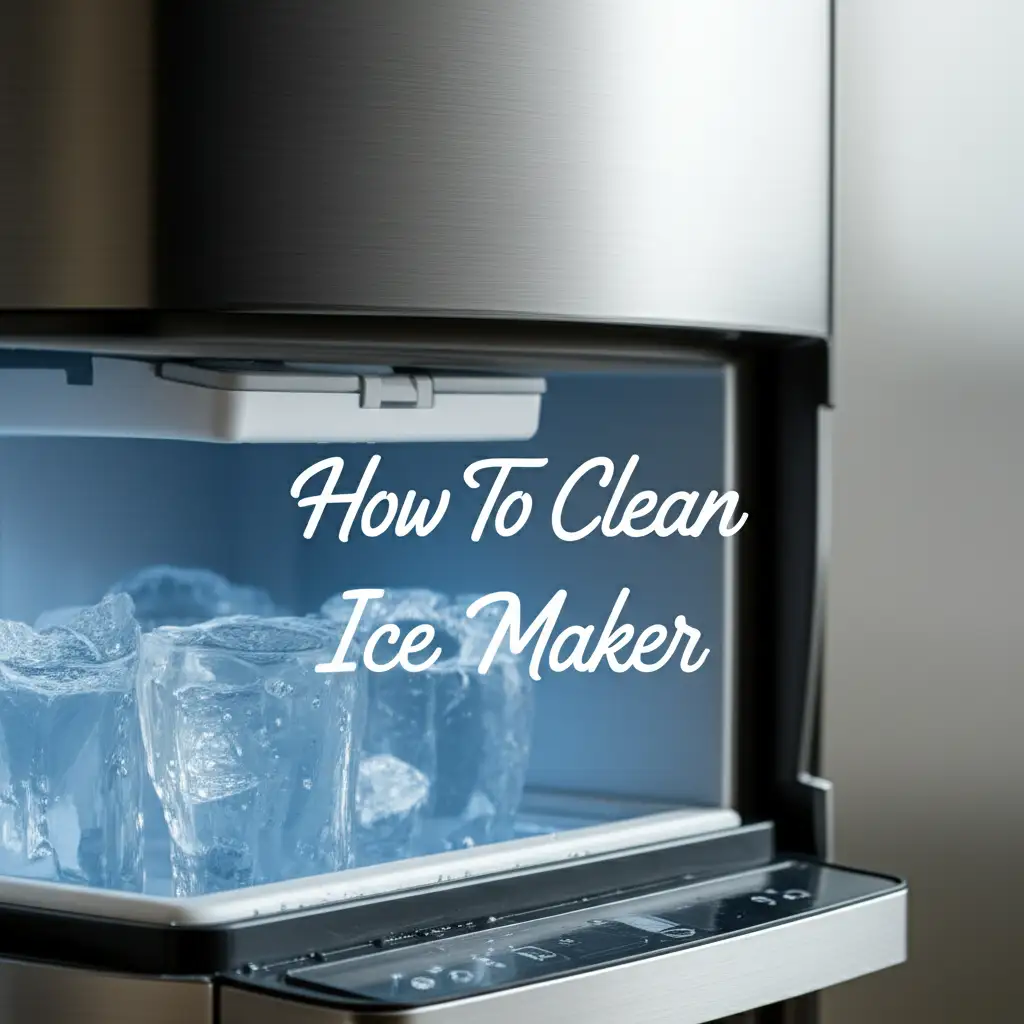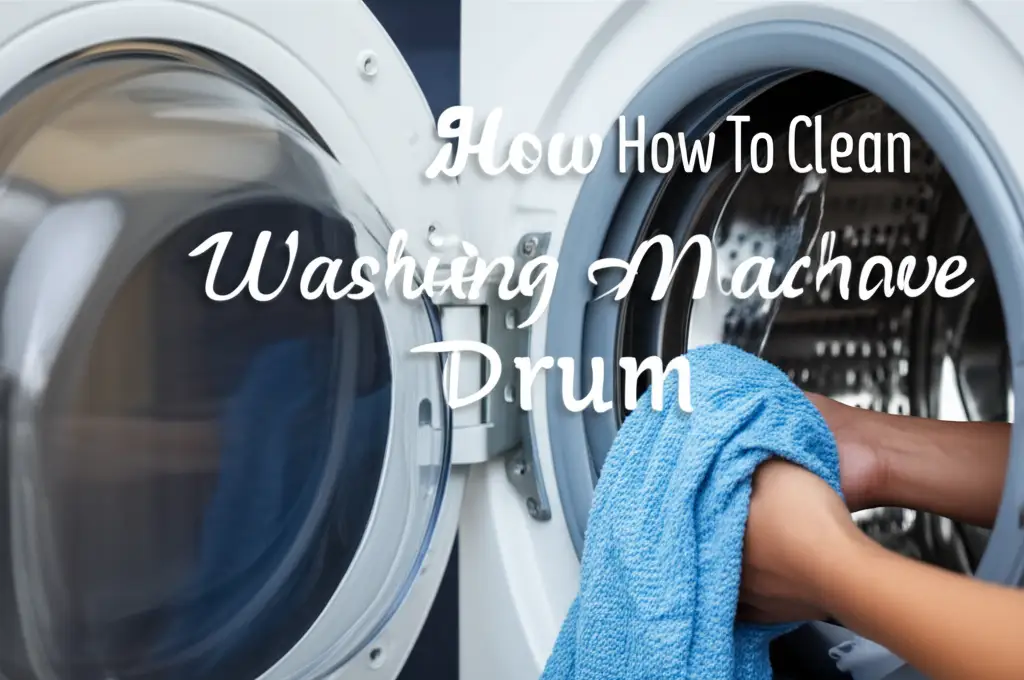· Home Appliance Care · 12 min read
How To Clean Water Distiller

Keep Your Water Pure: How to Clean Your Water Distiller
You rely on your water distiller for pure, clean water. But what happens when mineral buildup starts to affect its performance or the quality of your water? A dirty distiller can produce less-than-perfect water and shorten its lifespan. This guide will show you exactly how to clean a water distiller, ensuring you always get the purest results.
Maintaining your water distiller is important. It ensures the water you drink is truly distilled and free of impurities. We will explore why cleaning is vital, the tools you need, and a simple, step-by-step cleaning process. You will also learn about cleaning schedules, handling stubborn stains, and general maintenance tips. Get ready to give your distiller the care it deserves.
Takeaway:
- Regularly clean your water distiller to prevent mineral buildup and ensure pure water quality.
- Use white vinegar or citric acid for effective descaling of the boiling chamber.
- Clean the collection bottle and other components separately.
- Establish a cleaning schedule based on your water hardness and usage.
Cleaning a water distiller involves descaling the boiling chamber to remove mineral deposits using acidic solutions like white vinegar or citric acid, followed by thorough rinsing. Regularly cleaning the collection bottle and replacing filters also ensures the purity of your distilled water and prolongs the appliance’s life.
Why Cleaning Your Water Distiller Matters for Pure Water
You might wonder why cleaning a water distiller is so important. A water distiller works by boiling water. This process leaves behind impurities and minerals. These minerals accumulate over time. They form a hard, crusty layer inside the boiling chamber. This buildup is often called scale.
Scale buildup impacts your distiller in several ways. First, it reduces efficiency. The heating element must work harder to boil water. This increases power consumption. Second, it affects water purity. While distilled water is supposed to be free of minerals, excessive scale can sometimes flake off. These flakes may enter your collection bottle. This contaminates your “pure” water. Finally, scale shortens the life of your appliance. A heavily scaled distiller can overheat. This leads to damage and premature failure. Regular cleaning prevents these problems. It ensures your distiller provides consistent, high-quality pure water for years. It protects your investment and your health.
Gather Your Tools: Essential Supplies for Distiller Cleaning
Before you start cleaning your water distiller, gather the necessary supplies. Having everything ready makes the process smoother. You probably have most of these items at home already. This list covers the basics for a thorough cleaning.
You will need white vinegar. This common household item is excellent for dissolving mineral deposits. Its acidic nature breaks down scale effectively. Alternatively, you can use citric acid powder. Many distiller manufacturers recommend citric acid. It is a natural descaling agent. You will also need a non-abrasive scrubbing brush or sponge. This helps remove loosened scale without scratching the distiller’s interior. A soft cloth is useful for wiping down exterior parts and drying. Finally, access to fresh water for rinsing is essential. Some people also keep a small plastic scraper handy for very stubborn deposits. These simple tools ensure you can tackle any buildup in your distiller.
Step-by-Step Guide to Deep Cleaning Your Water Distiller
Deep cleaning your water distiller is not difficult. It requires a few steps and some patience. This process focuses on removing the stubborn mineral scale inside the boiling chamber. This is where most of the buildup occurs. Follow these instructions for a sparkling clean distiller.
Initial Rinse and Preparation
First, unplug your distiller. Let it cool completely if it was recently used. Empty any remaining water from the boiling chamber. Give the chamber a quick rinse with fresh water. This removes any loose debris or sediment. Then, you can see the extent of the mineral buildup. This initial rinse prepares the surface for the cleaning solution. It also ensures safety before handling the appliance.
Vinegar or Citric Acid Method
Now, choose your descaling agent. For white vinegar, fill the boiling chamber with enough vinegar to cover the mineral deposits. Do not fill it completely. Leave some space at the top. For citric acid, follow the manufacturer’s instructions. Typically, you mix 1-2 tablespoons of citric acid powder with enough warm water to cover the scale. Pour this solution into the boiling chamber. Do not turn on the distiller. Let the solution sit. The soaking time depends on the severity of the scale. For light buildup, 1-2 hours may be enough. For heavy scale, let it soak overnight. The acid slowly dissolves the mineral deposits. You might notice bubbling or fizzing. This indicates the acid is working on the scale.
Scrubbing and Rinsing
After soaking, carefully empty the cleaning solution. Now, use your non-abrasive brush or sponge. Gently scrub the inside of the boiling chamber. Focus on areas with remaining scale. The soaking should have softened most of it. So scrubbing should be easy. Do not use metal scourers or harsh abrasives. These can damage the distiller’s surface. Once you have scrubbed away the visible scale, rinse the chamber thoroughly. Use plenty of fresh water. Rinse several times to ensure all traces of the cleaning solution are gone. Any remaining vinegar or citric acid can affect the taste of your distilled water. After rinsing, you can clean hard water stains from other parts of your home with similar methods. This ensures no residue remains.
Cleaning the Collection Bottle and Other Components
While the boiling chamber is the main focus, other parts of your water distiller also need attention. The collection bottle, lid, and spigot can also accumulate impurities. Regular cleaning of these components maintains the overall hygiene of your distiller. It ensures the water stays pure after distillation.
The collection bottle is where your pure water gathers. It can develop residue or even mold if not cleaned regularly. To clean it, simply wash it with warm, soapy water. Use a bottle brush to reach all areas. Rinse it thoroughly with fresh water. Allow it to air dry completely. For stubborn spots, a mixture of vinegar and water can help. You can use the same cleaning approach you would for a regular how to clean water bottle. The lid and spigot also need cleaning. These parts can collect dust or minor mineral residue. Wipe them down with a damp cloth. You can use a mild soap solution if needed. Rinse them well afterwards. If your distiller has a charcoal filter, remove it before cleaning. Replace it according to the manufacturer’s recommendations, usually every few months. Keeping all these parts clean ensures your distilled water remains pristine.
Addressing Stubborn Buildup and Hard Water Stains
Sometimes, regular cleaning may not be enough for very stubborn buildup. Hard water areas often lead to thicker mineral deposits. These can be challenging to remove. But with a bit more effort, you can tackle even the toughest hard water stains. Do not despair if your first cleaning attempt leaves some residue.
For extremely heavy scale, you might need to repeat the soaking process. Fill the boiling chamber with a stronger solution of vinegar or citric acid. Let it sit for a longer duration, perhaps overnight or even for 24 hours. For particularly stubborn spots, you can make a paste with citric acid powder and a small amount of water. Apply this paste directly to the mineral deposit. Let it sit for a few hours before scrubbing. A plastic scraper can carefully chip away at very thick, hard scale. Be gentle when using a scraper to avoid damaging the distiller’s surface. Remember, patience is key with heavy buildup. After removing the deposits, rinse the distiller multiple times. Ensure no cleaning agent remains. This thorough rinsing is critical for taste and safety. You can also apply similar principles when trying to clean shower glass hard water.
How Often Should You Clean Your Water Distiller?
The frequency of cleaning your water distiller depends on several factors. These include how often you use it and the hardness of your source water. Understanding these factors helps you establish an effective cleaning schedule. Regular cleaning prevents extensive buildup. This makes each cleaning session easier.
If you use your distiller daily and have very hard water, you will need to clean it more often. In such cases, a light cleaning every week or two might be necessary. This involves a quick rinse and perhaps a short vinegar soak. For moderate use and average water hardness, cleaning once a month is usually sufficient. This monthly deep clean with vinegar or citric acid keeps scale at bay. If you use your distiller infrequently, you might clean it every few months. However, always check the boiling chamber for visible scale before each use. A thin layer of white or brown residue indicates it is time for a cleaning. Ignoring visible scale will lead to thicker deposits. This makes future cleanings more difficult. Consistent cleaning extends the life of your distiller. It ensures the purest water output. Just like you would consider how often to clean water filter in other appliances, a distiller also needs regular attention.
Troubleshooting Common Distiller Cleaning Issues
Even after cleaning, you might encounter some minor issues. These can include a strange taste in the water or a lingering odor. Addressing these problems ensures your distilled water is truly pure and pleasant to drink. Many common issues have simple solutions.
If your distilled water has a slight vinegar or sour taste after cleaning, it means you did not rinse thoroughly enough. Run a batch of clean tap water through the distiller cycle. Discard this water. Repeat this process two or three times. This “rinsing cycle” helps flush out any residual cleaning solution. A persistent plastic or chemical smell might indicate new appliance syndrome or a need for a new carbon filter. New distillers sometimes have a factory smell that dissipates with initial uses. For older distillers, ensure your carbon post-filter is fresh. It removes volatile organic compounds and odors. If the distiller still shows some scale after cleaning, you likely need a longer soak or more vigorous scrubbing. Do not give up after one attempt with stubborn buildup. Repeat the cleaning process. Increase the concentration of your cleaning solution slightly if necessary. Patience and persistence usually resolve most cleaning-related issues. You can think of it like cleaning sediment from a water heater; sometimes, a repeat process is needed to completely remove deposits.
Maintaining Your Distiller for Long-Term Performance
Cleaning is only one part of caring for your water distiller. Proper daily maintenance and good habits also play a big role. These practices contribute significantly to your distiller’s longevity and efficient operation. They also ensure consistent water quality.
After each distillation cycle, empty the boiling chamber. This prevents minerals from drying and hardening on the surface. A quick rinse with fresh water can also help. This simple step reduces the frequency of deep cleaning. Always allow the distiller to cool before adding more water for the next cycle. This prevents thermal shock to the heating element. It also helps manage mineral buildup better. Regularly check the carbon post-filter. Replace it according to the manufacturer’s guidelines. These filters remove any volatile organic compounds that might pass through distillation. They are crucial for taste and odor. Store your distiller in a clean, dry place when not in use. Protect it from dust and debris. If you plan to store it for an extended period, ensure it is completely dry inside to prevent mold growth. By following these simple maintenance tips, you can keep your water distiller running smoothly for many years. Proper care helps extend its life and provides you with pure water consistently.
FAQ Section
Q: Can I use bleach to clean my water distiller? A: No, you should not use bleach to clean your water distiller. Bleach is a strong chemical that can damage the distiller’s components and leave harmful residues. Stick to food-grade acids like white vinegar or citric acid, which are safe and effective for descaling. These natural options ensure your water remains pure after cleaning.
Q: Why does my distilled water still taste bad after cleaning? A: If your distilled water tastes bad after cleaning, it likely means you did not rinse the boiling chamber enough. Residual cleaning solution, like vinegar, can affect the taste. Run 2-3 batches of tap water through the distiller and discard them. Also, check if your carbon post-filter needs replacement, as old filters can cause odors.
Q: How often should I replace the carbon filters in my distiller? A: The frequency for replacing carbon filters varies by distiller model and usage, but generally, it’s recommended every 1-3 months. Some manufacturers specify replacement after a certain number of gallons. Always refer to your distiller’s user manual for precise instructions to ensure optimal water purity.
Q: Is citric acid better than vinegar for cleaning a distiller? A: Both citric acid and white vinegar are effective for cleaning water distillers. Citric acid is often preferred by manufacturers because it is odorless and leaves no lingering taste if rinsed properly. Vinegar is readily available and inexpensive. Choose based on your preference and the severity of the mineral buildup.
Q: What if my distiller smells after cleaning? A: A lingering smell after cleaning usually indicates insufficient rinsing. Run a few cycles of tap water through the distiller, discarding the water each time. If the smell persists, especially a plastic smell, it could be a new distiller “break-in” odor or indicate that the carbon filter needs to be changed.
Conclusion
Cleaning your water distiller is a simple but vital task. It ensures you always have access to the purest water possible. Regular maintenance also protects your appliance and extends its life. We covered the importance of descaling, the tools you need, and a clear step-by-step cleaning process. You now know how to tackle stubborn buildup and maintain other components.
Remember to establish a cleaning schedule based on your usage and water hardness. This proactive approach prevents major issues. Troubleshooting common problems also becomes easy with practice. By following these straightforward tips, you keep your water distiller performing at its best. Enjoy the peace of mind that comes with consistently clean, pure water. Make regular water distiller cleaning a routine part of your home care.
- water distiller cleaning
- appliance maintenance
- descaling
- pure water
- hard water removal




